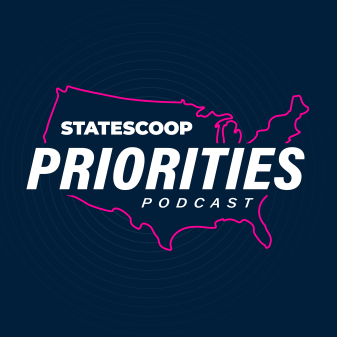Workforce initiatives drive modernization efforts in Pennsylvania
There’s a common phrase used in the state government information technology community to represent the key elements that influence outcomes: people, process and technology.
For Jim Weaver, Pennsylvania’s chief technology officer, it applies across all parts of the enterprise, and especially in his work to modernize legacy systems.
“It’s too often our focus on modernization is being driven by a technology component,” Weaver says on the latest episode of Priorities. “The technology component is probably the easiest part of the discussion. Do not minimize the people and process part of the effort.”
In Pennsylvania, which has included modernization in all four parts of its information technology strategic plan, the workforce component transcends both the capabilities and resources aspects of any successful modernization effort, Weaver says.
“When looking at process, knowledge or organizational management spend, data lifecycle management, things of that nature … are all equally critical,” Weaver says. “I would really tell my peers to spend time on those areas and the technology components become significantly easier to deliver. Too many times, it’s been on the technology.”
To further ingrain that philosophy into policy, Weaver says the commonwealth’s Future State vision for the future is built upon a solid foundation of people, relationships and supporting agreements.
On this podcast:
- Jim Weaver, chief technology officer, Pennsylvania
- Jake Williams, associate publisher and director of strategic initiatives, StateScoop
What to listen for:
- One Pennsylvania-operated product was incurring a 33 percent cost increase for product support while not generating any additional business value, Weaver says. The state decided to modernize that system and discontinue the need for extended support.
- The state’s modernization efforts center around building a scalable compute environment, a flexible telecom structure that provides for bandwidth needs and enables effective use of cloud-based services.
- Continued focus on legacy technology, Weaver says, takes away workforce resources from the skill sets that are needed to transform the state’s model to one that brokers services rather than one that provides them.
- Based on the state IT strategic plan, Weaver says modernization efforts run through all four main IT goals including service optimization, government transformation, workforce empowerment and fostering communication.
- While Weaver says he does not see a future in which legacy modernization will not exist, risk-based and priority-based modernization initiatives should cut down on the effect that legacy technology has on the enterprise.
Priorities is StateScoop’s regular podcast that examines the leading strategies, technologies and challenges that state CIOs expect to face this year.
In addition to listening to Priorities on StateScoop.com, you can now subscribe to the podcast on iTunes and have episodes delivered directly to your podcasts app on your smartphone when they are released.

